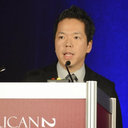[Effectiveness and role of lamotrigine in the paradigm shift towards new antiepileptic drugs: a therapeutic strategy proposed after an investigation of a large number of cases at a single hospital].
Słowa kluczowe
Abstrakcyjny
Lamotrigine (LTG) has been recognized as one of the best newer antiepileptic drugs (AEDs) used in developed countries since 1991. A retrospective study was carried out to evaluate the efficacy, adverse reactions, and other peculiarities of LTG. Two hundred and eighty-one patients with epilepsy, aged 16 or more, were treated with LTG between December 2008 and December 2012 at the Seirei Hamamatsu General Hospital. One hundred and forty patients were found to be eligible to evaluate the effectiveness of LTG. Of them, 100 patients had localized epilepsy, and 40 patients had generalized epilepsy. Seventy-five out of these 140 (53.6%) patients obtained seizure freedom following LTG use, and 24 patients (17.1%) showed more than 50% seizure reduction, which indicates that a total of 99 patients (70.7%) were good responders. A seizure reduction of less than 50% was seen in 8 patients (5.7%), whereas 30 patients (21.4%) did not display any obvious seizure reduction. Three patients (2.1%) showed a worsening of seizure frequency. Patients with idiopathic generalized epilepsy such as juvenile myoclonic epilepsy showed satisfactory results. Many good responders were also patients with stroke or brain tumor. The number of concomitant AEDs used demonstrated a more distinctive feature. Monotherapy without any other AEDs was used in 20 patients. LTG was used as an add-on with 1 concomitant AED in 59 patients (42.1%) and as an add-on with 2 concomitant AEDs in 37 patients (26.4%). Thus, a large number of patients (68.6%) underwent early add-on treatment. LTG as an add-on in concert with concomitant AEDs contributed to the excellent results in terms of seizure reduction observed in this study. LTG administration requires established titration, particularly to prevent drug eruption. Over 60% of the patients were treated by slower titration than that used in the established titration method. However, seizure freedom was accomplished within 1-5 weeks from the beginning of LTG treatment with doses much lower than 200 mg/day, which indicated the effectiveness of low-dose LTG in the early phase of treatment. The average maintenance dose was 162.7 mg/day; however, half of the patients maintained their dose at more than 200 mg/day. The continuation rate was 77.2%. The main reasons for withdrawal were dissatisfaction with drug effectiveness and drug eruption. However, the incidence of drug eruption was only in 15 out of 281 (5.3%) patients, which is similar to previously reported rates. Therefore, LTG is an effective and safe AED. Moreover, it is a promising drug for promoting a paradigm shift towards newer AEDs. LTG administration as a first add-on AED is strongly recommended to obtain excellent results and to maintain good compliance with the epilepsy treatment course.




